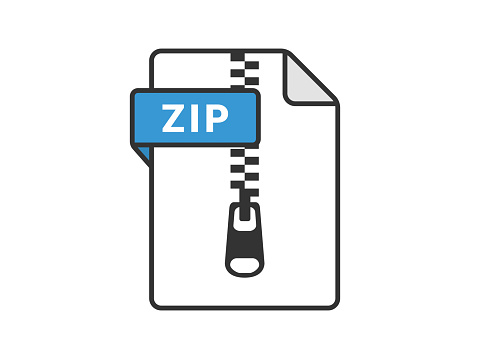Description
1 Introduction
This lab will focus on abstract classes and inheritance. In particular, know how to declare an
abstract class, extend a class, declare abstract methods, override methods, and call methods
of the super class. Additionally, we will be using the Point class from the Java API, so be
sure to read the JavaDoc for java.awt.Point.
2 Exercises
Fork and clone the cpsc250l-lab05 repository from the cpsc250-students group on Gitlab.
2.1 Abstract Class: Shape
In the first exercise, you will create an abstract class that will serve as the basis for the
remaining exercises in this lab. Do not do any other exercise until this one passes
all of its jUnit tests!
Exercise 1
Create an abstract class called Shape with two private fields:
• String name
• Point[] points (you will need to import java.awt.Point).
Implement the following methods.
1. protected Shape(String aName)
This constructor should set the name field to the aName parameter.
2. public final String getName()
Returns the name of the Shape.
3. protected final void setPoints(Point[] thePoints)
Sets the points field to the thePoints parameter.
4. public final Point[] getPoints()
Returns the points of the Shape.
5. public static double getDistance(Point p1, Point p2)
Returns the Euclidean distance between p1 = (x1, y1) and p2 = (x2, y2). That is, it
returns
p
(x1 − x2)
2 + (y1 − y2)
2
.
Declare the following abstract methods.
1. public abstract double getPerimeter()
2. public abstract double getArea()
Test your code against ShapeTest.java. Do not continue until all jUnit tests pass!
2
Exercise 1 Complete
Run:
git add .
git commit -m “Completed exercise 1”
git push origin master
2.2 Subclass: Triangle
Exercise 2
Create a new class called Triangle that extends Shape and implement the following constructor.
• protected Triangle(Point[] aPoints) This constructor calls the superclass’s constructor and passes it the name “Triangle”. It then passes a copy of the first three
entries in the aPoints array to the setPoints method.
Override the following methods.
1. public double getPerimeter()
This method calculates the perimeter of the Triangle. The perimeter of a triangle
is the sum of the lengths its sides (to get the length of a side, calculate the distance
between the two of its vertices).
2. public double getArea()
CPSC 250L Lab 5 Inheritance
This method calculates the area of the Triangle. If the vertices of a triangle are
A = (ax, ay), B = (bx, by), and C = (cx, cy), then the area of the triangle is given by
the expression
ax(by − cy) + bx(cy − ay) + cx(ay − by)
2
.
Test your code against TriangleTest.java.
Exercise 2 Complete
Run:
git add .
git commit -m “Completed exercise 2”
git push origin master
2.3 Subclass: Quadrilateral
Exercise 3
Create a new class called Quadrilateral that extends Shape and implement the following
constructor.
• protected Quadrilateral(Point[] aPoints)
This constructor calls the superclass’s constructor and passes it the name “Quadrilateral”.
It then passes a copy of the first four entries in the aPoints array to the setPoints
method.
Override the following methods.
1. public double getPerimeter()
This method calculates the perimeter of the Quadrilateral. The perimeter of a
quadrilateral is the sum of the lengths its sides (to get the length of a side, calculate
the distance between the two of its vertices).
2. public double getArea()
This method calculates the area of the Quadrilateral. If the vertices of a quadrilateral
are A = (ax, ay), B = (bx, by), C = (cx, cy), and D = (dx, dy), then the area of the
quadrilateral is given by the expression
(axby − aybx) + (bxcy − bycx) + (cxdy − cydx) + (dxay − dyax)
2
.
Test your code against QuadrilateralTest.java.
Exercise 3 Complete
Run:
git add .
git commit -m “Completed exercise 3”
git push origin master
2.4 Subclass: Circle
Exercise 4
Create a new class called Circle that extends Shape and implement the following methods.
CPSC 250L Lab 5 Inheritance
1. protected Circle(Point aCenter, double radius)
This constructor calls the superclass’s constructor and passes it the name “Circle”.
It then passes an array containing only the point aCenter to the setPoints method.
Additionally, it stores radius in a private field. However, if radius is negative it will
store 0.0 as the radius.
2. public double getRadius()
This returns the radius of the Circle.
Override the following methods.
1. public double getPerimeter()
This method calculates the perimeter of the Circle. The perimeter of a circle is given
by the expression
2πr
where r is the radius of the circle.
2. public double getArea()
This method calculates the area of the Circle. The area of a circle is given by the
expression
πr2
where r is the radius of the circle.
Test your code against CircleTest.java.
Exercise 4 Complete
Run:
git add .
git commit -m “Completed exercise 4”
git push origin master
CPSC 250L Lab 5 Inheritance
3 Common Mistakes
The solutions to some common mistakes are as follows.
1. Make sure that Shape passes all of its tests before proceeding to the last three exercises.
If it doesn’t, it will adversely affect the remaining exercises.
2. Be sure to extend the Shape class! If you do not, you will fail the jUnit tests.
3. Before running the tests for any of the subclasses, make sure that getPerimeter and
getArea are implemented (even if its just return 0.0;).



